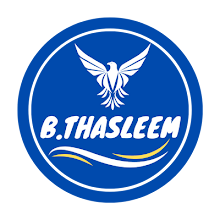The skeleton is covered by layers of skeletal muscle. Each muscle is attached to two or more bones so that when the muscle contracts (shortens) it produces MOVEMENT. Skeletal muscle makes up about 40 per cent of body weight. As well as producing movement, some muscles remain partially contracted for long periods to maintain the body’s posture.
A skeletal muscle contains many long fibres arranged in bundles called fascicles. Each fibre consists of smaller strands, called myofibrils. These contain yet smaller parts called myofilaments. A muscle contracts when sets of these myofilaments slide past each other in response to nerve signals.
There are more than 600 muscles in the body. Their sizes vary from tiny, such as the muscles that move the eyeballs in their sockets, to very large, such as some muscles in the thighs. They are arranged in layers; shown here are the superficial (outer) muscles at the front of the body and, on this side, some of the deeper muscles.
Skeletal muscle is also called striated or striped muscle. The stripes, which can be seen clearly when a piece of muscle is viewed under a microscope, are caused by the arrangement of myofilaments in individual muscle fibres. These lead to the appearance of alternating light and dark bands.
Skeletal muscles cross joints and are attached to the bones on either side by tough cords called tendons. They contract, to produce movement, as a result of nerve signals sent from the brain and spinal cord. Although our movements are under our conscious control, the brain can learn patterns of movements so that we can perform certain tasks, such as walking, without thinking.
MUSCLE ACTION IN MOVEMENT
To straighten the knee, one group of muscles at the front of the thigh contracts, while other muscles at the back of the leg relax. Two groups of muscles such as this are called opposing groups. Contractions of opposing groups have opposite effects, such as knee straightening and bending.
To bring about a movement, the brain sends a series of signals instructing specific muscles to contract, via a network of nerve cell fibres. Each individual fibre divides into several branches before it reaches the muscle, and each branch connects to a single muscle fibre. The region where the nerve and muscle fibres meet is called a neuromuscular junction.
Skeletal muscle is not the only type of muscle in the body. There are two other types: smooth muscle and cardiac (heart) muscle. Unlike skeletal muscle, these muscles are not under our conscious control.
Smooth muscle is found in the walls of many organs, such as the bladder, the womb, and the intestines, where it contracts to propel food along. It has short, spindle-shaped fibres.
Cardiac muscle contracts tirelessly throughout life to pump blood from the heart to the lungs and around the body. It is made up of a network of branching muscle fibres.





0 comments:
Post a Comment